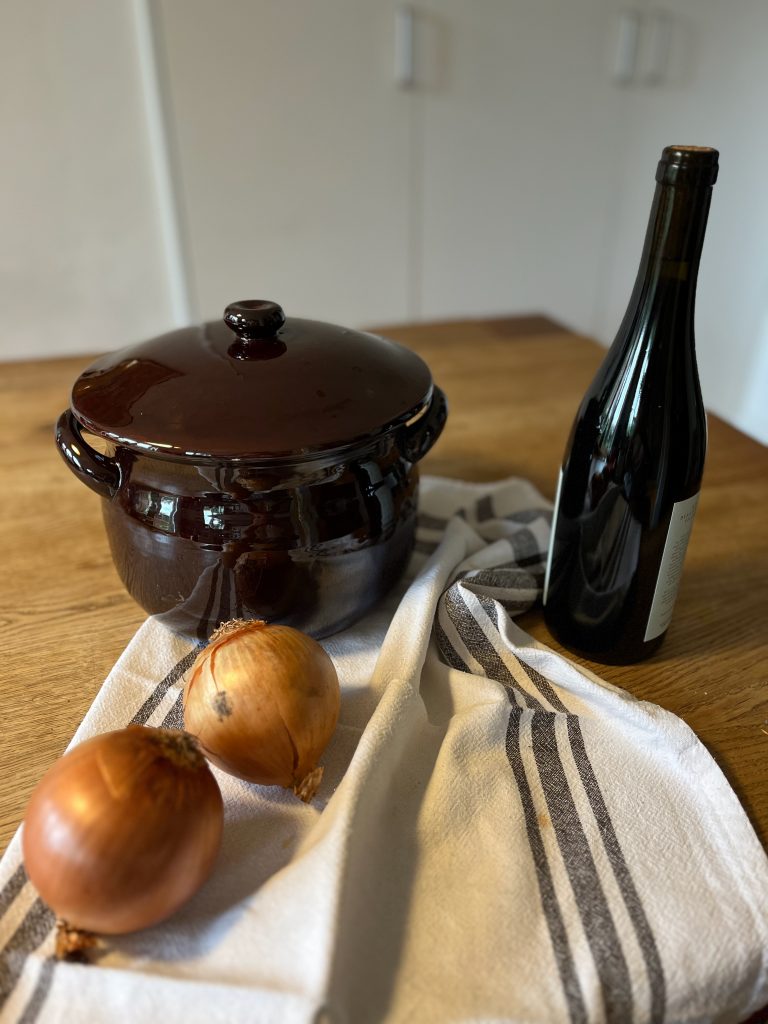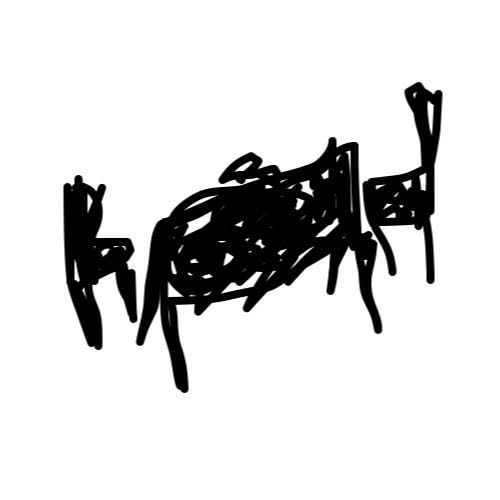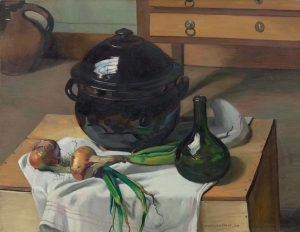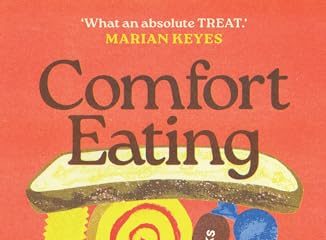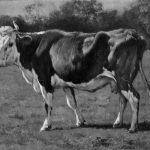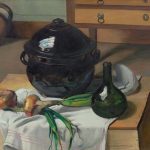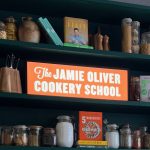C’est dans les vieux pots qu’on fait la meilleur soupe (The best soups are made in old pots)
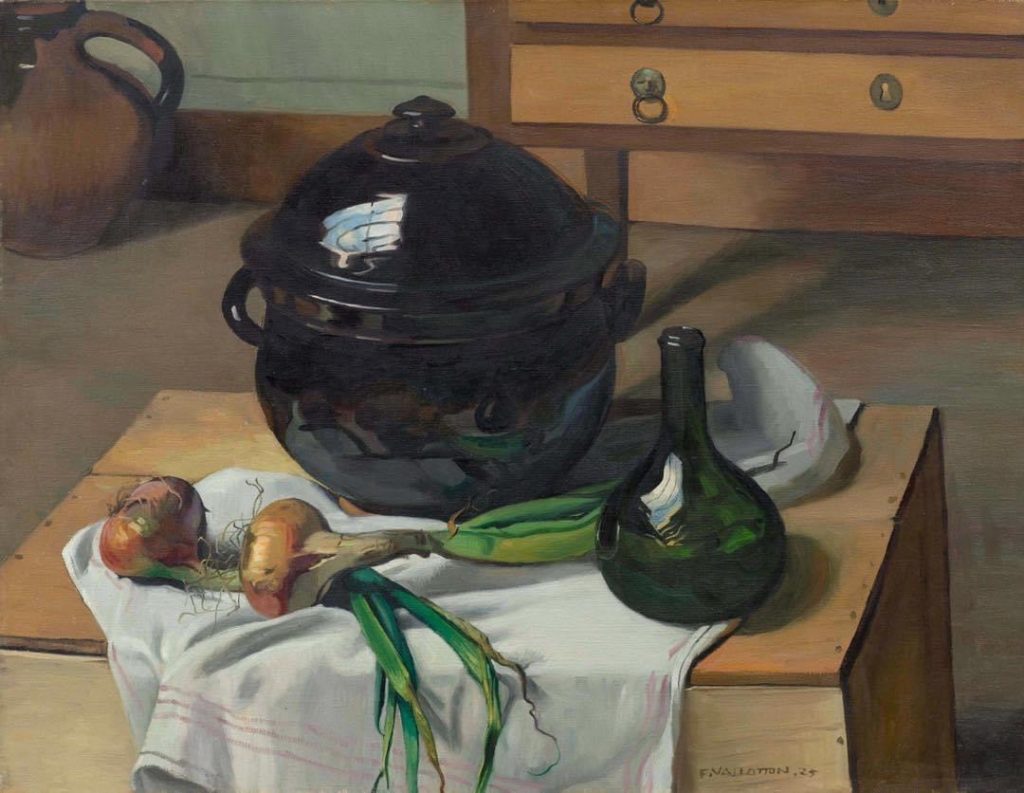
Felix Edouard Vallotton, was a painter and printmaker born in Lausanne in 1865. He spent most of his life in France following his training at the Académie Julian in Montmartre. Vallotton was a member Les Nabis a group of young artists that also included Edouard Vuillard and Pierre Bonnard. This piece “Onions and soup tureen” was painted the year of his death in 1925 in Honfleur where he’d retreated due to ill health.
I came across this painting scrolling on Instagram as you do. I was stuck how modern and familiar it felt despite the fact that it was painted a 100 years ago.
At the time, I was trying out recipes cooked in a terracotta casserole pot- very similar to the one featuring in the painting. It had that same rich caramel coloured glaze and generous rounded shape. I found the dish in a charity shop for a few pounds and I was curious to cook something with this antiquated pot. Something made out of clay?! Such an old-fashioned and simple material when you consider than most pans and pots on the market these days are practically made with NASA grade material.
It was not a disappointing experience. It is a fantastic way to cook stews, with or without meat: ratatouille, braised meat, lentil stew etc. The advantages of cooking in a clay pot are many: from an even heat distribution to the fact that it keeps moisture. It feels like a very gentle and dare I say – respectful – way to cook. There is no high flames, charring of ingredients or any other theatrics. You simply start placing the ingredients in the cold dish then bring it gently to heat (you’ll need a heat diffuser) and let the pot do its thing. This has become my favourite cooking pot for lentils and sausages stew.
Of course, the downside is that you have to cook low and slow; and so it would have been the way at the time Vallotton painted this work. No microwave or air fryer in 1925.
The other issue is how fragile the vessel is. Easily cracked, it needs to be handled with care.
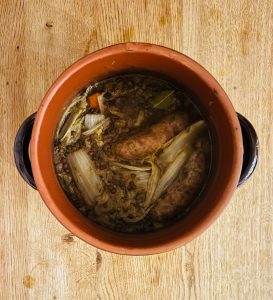
Cooking in a terracotta pot is not for a quick and fast dinner. Think of it as a mindful cooking moment – it cannot be rushed. It is certainly worth embracing this method though as the clay does most of the work for you and brings out the best out of the ingredients. It’ll render the onions and vegetable so “jammy” and the meat so tender.
As a side note: what I took for a clay pot was most likely a tureen (or soupiere as per the painting’s title in French). Sadly, a piece of crockery hardly used these days – those can be found languishing antiques or charity shops in great numbers. We hardly decant soups, stews and other dishes in serving vessels to be brought all at the same time to the table as per the “Service à la française” or French service (i.e. when whole dish where brought to the table as opposed to Russian service where everything is brought sequentially and often portioned out).
On special occasion such as birthday dinner or Christmas lunch, there is something very and grand and theatrical about the reveal of a tureen’s content: lift the lid and ogle whatever concoction is in it: ta-dah! Here’s what I made earlier for you. And it is still hot.
Beyond revisiting by-gone ways of cooking or presenting food, I loved what “Onions and soup tureen” represents. I’d read somewhere that Vallotton was aiming to break down the barrier between art and everyday life. It is very much what we are looking at: a simple scene of everyday objects brought together with great details, almost photographic. In 1925, a soup tureen, a couple of onions, a tea towel and a wine bottle are set on a wooden table for a short time before being used and somehow here to stay forever thanks to Valloton’s great eye.
